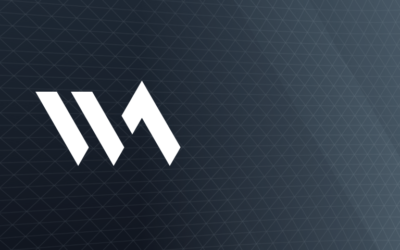When it’s time to build anything new, whether it’s a skyscraper or a website – or your bank’s CX (customer experience) – it’s never as simple as you’d hope it could be. In a perfect world, you could take the ideal picture in your mind and replicate it in the real world. But there are several reasons why that never happens.
The difference between what you want and what you get – especially if you’re building alongside other people – often comes down to legacy thinking that keeps you mired in the past. Even though you’re building something brand new, it’s nearly impossible to think about it outside the confines of the past – what worked before, what didn’t work, past problems and solutions, and beyond.
When it comes to building new technology for banks, these common roadblocks can stand in the way of accomplishing your goals and result in spending countless dollars and hours on a solution that in the end may not really solve the problem at hand.
Today, we want to look at four common roadblocks of legacy thinking in the financial industry that may be holding back your bank’s CX – and what you can do about them.
1. Data Silos
The Problem
When your data exists in siloes, then your company works in silos, dramatically reducing efficiency, effectiveness and profitability. In addition, you will inevitably end up with multiple sources of truth, which leads to decreased confidence among your team – and your customers.
In regional and smaller banks today, every product they offer comes from a different system. Looking at it from a legacy perspective, it makes sense: How else could a bank give its clients a view of their business accounts, mortgages, trusts, investment portfolio, etc.?
But there is hope!
The Solution
Data silos are a serious inhibitor to business profitability, and the typical solution (which requires a big conversion to a new core system) is another inhibitor on operational efficiency.
The best course of action is to leverage a Customer Data Platform that uses Open Banking architecture to unify data from your books and records and other applications without the need to convert your data onto a new platform. No matter the size of your bank, unifying your customer data is more within reach than ever.
2. Outdated Infrastructure
The Problem
From the moment your bank created its first online system, you began building an infrastructure of systems that deliver your data to everyone who needs it, from customers to business bankers to CEOs. As the infrastructure grew and grew (and continues to grow), small problems were solved with “simple” solutions delivered by specialized systems.
In the end, what began as a streamlined infrastructure designed for the sole purpose of delivering essential data somehow morphs into a collection of legacy systems that don’t play well with each other. Sure, it still delivers data, but interacting with it can be a frustrating mess – and you may not even be able to access your own data.
Many of the banks we talk to tell us that they feel like these various platforms are holding their data hostage. Getting client information or even their own data out of these systems can be incredibly difficult, whether it’s due to technology deficiency or high cost – or both. The longer you invest in a disjointed system like this, the more impossible it may feel to extricate yourself from it.
The Solution
The solution is simple, but revolutionary: Own your own data. Whether you use something like Wealth Access or a CRM or something else, you should be able to own your own data. In 2022, your bank – no matter how big or small you may be – should not be beholden to leasing your data from other systems.
3. Extensive Dependencies
The Problem
Technology has boosted the ability of banks to deliver quality customer service on a whole new level over the past few decades, but to a large extent, these improvements are beholden to your team understanding how to use them. In many cases, the success of the systems used by regional banks comes down to a handful of people, or a single person in some cases, knowing how they work.
When just a few of those key stakeholders change jobs or retire, you’re suddenly left with a big knowledge deficit – one that could upset your entire system.
And it’s not just at banks. Often software vendors rely on account managers to maintain relationships, but even that can all fall apart if you lose your point person on the inside.
When that happens, you end up in a very difficult situation, where there are dependencies and knowledge that can quickly be lost. Without access to the people who know how everything is set up and why it was set up that way, everything can go downhill fairly rapidly.
The Solution
Again, the key here is to own your data. When you aren’t leasing your data, then you don’t have to worry about maintaining relationships across multiple systems and losing internal people who keep track of it all.
And even when you own your own data, it’s important that you document your processes in a way that everyone on your team can understand.
Related Case Study: How AMG National Trust Bank partnered with Wealth Access to create an exceptional digital-first, mobile experience for their customers
4. Control
The Problem
Putting your data into a system is easy. Type some numbers and words, hit “Enter” and you’re done. So easy, right?
The problem comes when you want to get that data back out of a system.
When you use multiple platforms, getting data out is difficult – there’s no getting around that fact. Sure, it’s easy to put the data in, but then it all get stuck in something akin to a data cul-de-sac where it goes in and never comes out. And that’s a problem with technology providers that don’t provide access to that.
The Solution
We may sound like a broken record, but we’ll say it again: Own your data! This one simple piece of guidance can make such a difference in your CX.
It’s amazing how many problems can be solved by owning your data, but it’s true – especially when it comes to the area of control. When you own your data, you have access to everything all the time. You can deliver it however you want and leverage it however you want.
Owning your data means improved clarity for customers and employees alike, more informed decisions by your executive team, and increased flexibility for everyone involved.
Related Case Study: How Fulton Bank uses Wealth Access to bring client data to life in new and exciting ways
And when you own your data, it’s important that you have a trusted partner who can help you avoid messy dependencies and help you deliver the best client experience.
Break Free from Legacy Thinking with Wealth Access
Ready to leave legacy thinking behind and build a system you and your customers will love? Contact Wealth Access today to get started.



